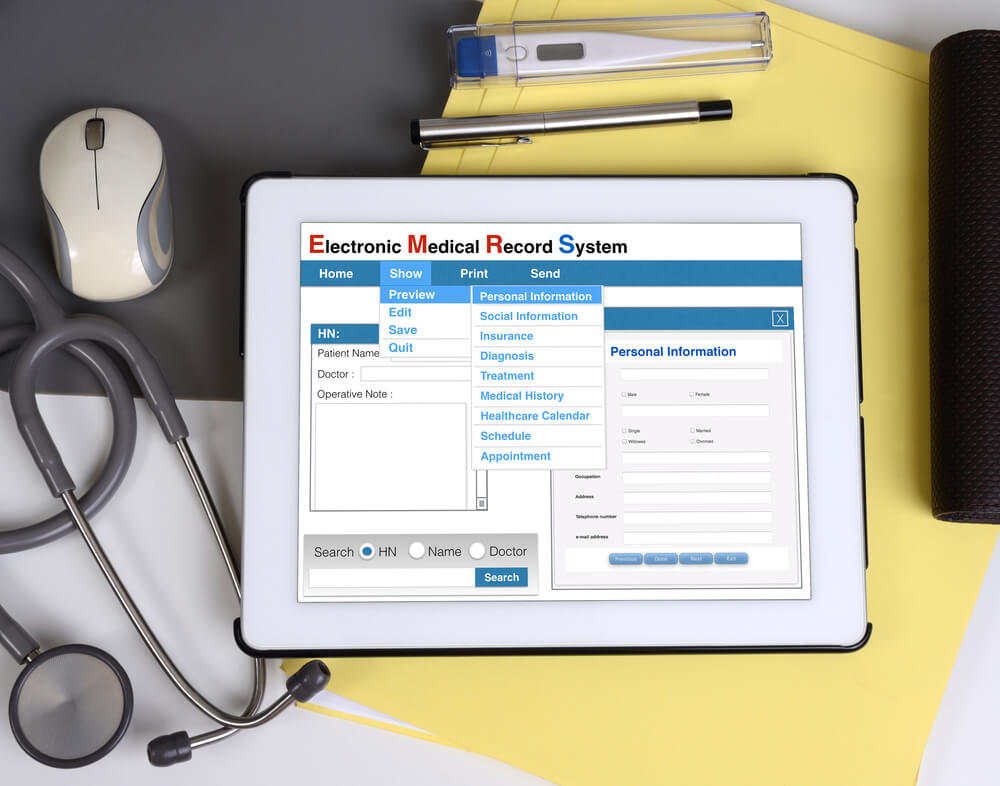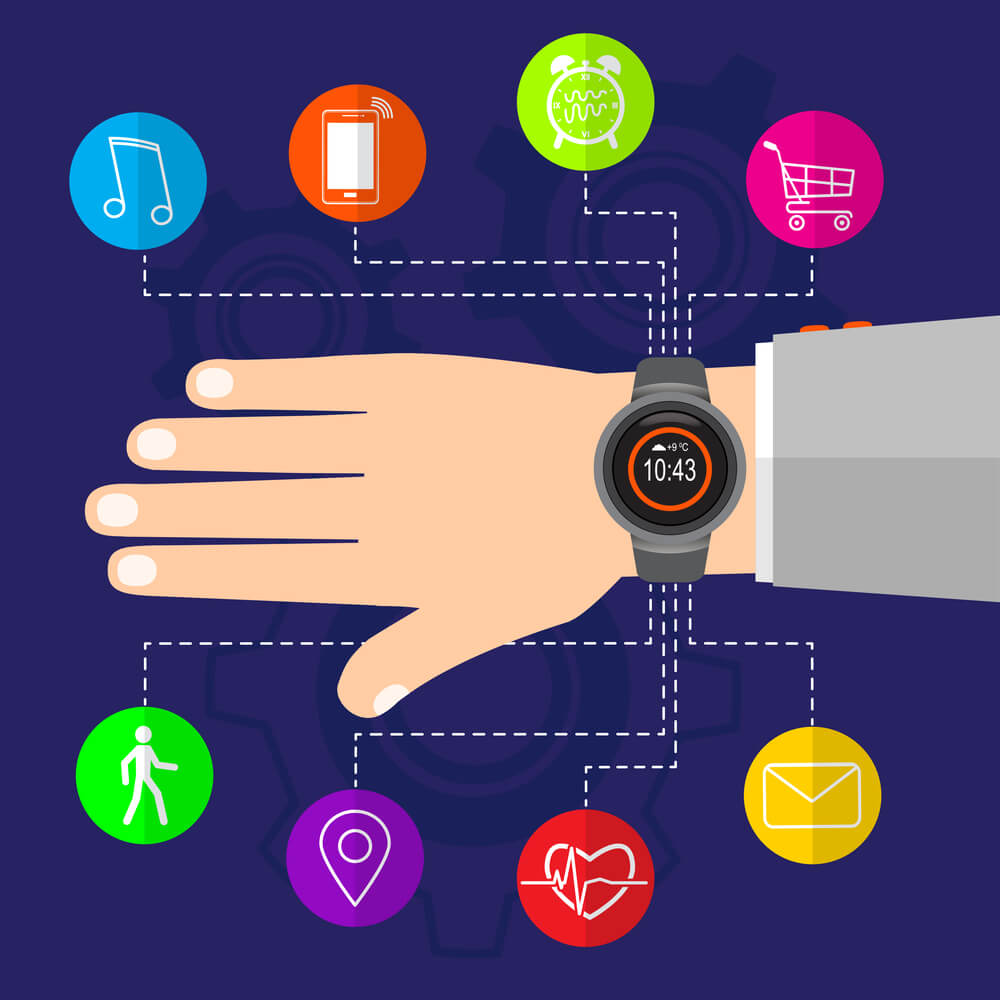- Basics of a Healthcare Ecosystem: Definition and How Does it Work?
- How Do Healthcare Systems Function?
- Understanding the Key Players in the Healthcare Ecosystem
- How about the Healthcare Stakeholders? Who are They?
- An Analysis of Progressive Ecosystems
- The Changing Landscape of Healthcare Ecosystems: How Are They Evolving?
- Healthcare Delivery is Experiencing Transformation via the Digital Ecosystem
- Investors in Innovative Health Technology Are Pouring Funds into Platform Business
- HealthTech Innovators & Investments
- Disruptors & the Need for Ecosystem Strategies
- Ecosystem Strategies for Healthcare Disruptors
Over the last few years, we have witnessed an upsurge in healthcare advancements. The evolution of industry ecosystems will likely drive the next wave of innovations in healthcare. Many people are involved in these healthcare ecosystems, including healthcare providers, payers, government agencies, technology companies, and patients. These ecosystems aim to improve healthcare services in terms of quality, availability, and cost.
According to a report by Grand View Research, the global digital health market is expected to reach USD 211.0 billion in 2022, with a compound annual growth rate of 18.6% from 2023 to 2030.
Several things cause the market’s growth, like more people using digital health technologies, paying more attention to value-based care models, and wanting personalized and preventative health services.
Overall, developing healthcare ecosystems is a huge chance for innovation and positive change in the industry. By encouraging collaboration and using the strengths of a wide range of stakeholders, it is possible to make a more effective and efficient medical system that better meets the needs of patients and providers.
TOP 10 HEALTHCARE TRENDS EXPECTED TO BE IN 2023

Basics of a Healthcare Ecosystem: Definition and How Does it Work?
A health innovation ecosystem is a network of organizations, people, and resources that work together to help make new health technologies, treatments, and ways of doing things happen. It aims to get people to work together and make it easier for research findings to be used in practical applications that can improve medical delivery and patient outcomes.
A healthcare ecosystem is a complex network of affiliated organizations, people, and technology that work together to deliver medical services to patients.
It includes many stakeholders, like healthcare providers, systems, and human services. Others are medical device companies, health information technology companies, insurance companies, and the people and communities that get health care services.
The groups offer a wide range of health services, from primary care and preventive services to specialized treatments and surgeries.
According to a report by Grand View, the global health service market is currently valued at approximately $8.5 trillion.
Below are some key trends and factors driving the global healthcare ecosystem market growth you should know about:
- Aging population: The global population is aging, which is increasing the demand for health services and products.
- Chronic diseases: The prevalence of chronic diseases (e.g., diabetes, heart disease, and cancer) is rising, driving demand for products and services.
- Technological advancements: The healthcare industry is constantly evolving and innovating, with new technologies being developed and adopted rapidly. Innovations include advances in pharmaceuticals, medical devices, and medical tech, which drive the healthcare ecosystem market growth.
- Increasing spending: Spending is increasing globally, with many countries investing more in their healthcare systems to improve access to care and the quality of care.
- Emerging markets: The market is also being driven by the growth of emerging markets (for instance, China and India), which are experiencing significant increases in spending and demand for healthcare products and services.
AGILE HEALTHCARE: HOW TO IMPLEMENT THE APPROACH

Each group or person in the healthcare ecosystem has a specific job to do when it comes to providing healthcare services. For example, hospitals and clinics give patients medical care, pharmacies prescribe medications, and insurance companies pay for health services.
In a healthcare ecosystem, services like diagnostic tests, treatments, and surgeries are given to patients by providers. Payers, such as insurance companies, cover the costs of these services by paying providers for their services. The payment system is often complex, with different rates and policies for different services and providers.
One of the most important parts of the changing healthcare ecosystem is the creation of new technologies and tools that make it easier for stakeholders to share data and information. These technologies help improve the efficiency and effectiveness of the medical system by letting providers access and share patient information, coordinate care, and keep track of results.
Some new tools and technologies are electronic health records (EHRs), wearables and other connected devices, and patient portals. Others are telemedicine platforms, health information exchanges, and decision-support systems powered by artificial intelligence.
The goal of a healthcare ecosystem is to give the people it serves complete, high-quality health care while also trying to improve efficiency and cut costs. This ecosystem strives to meet patients’ needs and help them maintain good health.
KEEP A PULSE ON EPIC APP ORCHARD AND HOW IT BENEFITS THE HEALTH SYSTEMS
Need help in developing your Healthcare App?
Reach outUnderstanding the Key Players in the Healthcare Ecosystem
The healthcare ecosystem consists of various players, including:
- Patients: The individuals seeking healthcare services.
- Providers: Doctors, nurses, and other medical professionals deliver patient care.
- Hospitals: Institutions that provide inpatient and outpatient care to patients.
- Clinics: Facilities that provide outpatient care to patients.
- Public health agencies: Work to ensure health promotion, disease management, and disease prevention in the population.
- Health insurance companies: Organizations that provide coverage for healthcare services.
- Government agencies: These are organizations, for instance, the Centers for Disease Control and Prevention (CDC) and the World Health Organization (WHO), that shape healthcare policies and practices.
- Pharmaceutical companies: Organizations that develop and manufacture drugs, other medications, and medical products.
- Medical device companies: Organizations that develop and manufacture medical devices, for example, pacemakers and artificial joints.
- Biotechnology companies: Organizations that develop and manufacture biologics (vaccines and therapies) based on living cells.
- Advocacy groups: which represent the interests of specific patient populations.
- Research institutions: Universities and other organizations that research healthcare issues.
- Professional associations are healthcare professionals who advocate for their respective fields and promote best practices.
FEMTECH IN HEALTHCARE: HOW TO MAKE IT EFFECTIVE
How about the Healthcare Stakeholders? Who are They?
The healthcare ecosystem typically includes various stakeholders, which we briefly describe below.
- Researchers and scientists: These individuals research and develop innovations and ideas.
- Healthcare providers: Doctors, nurses, and other healthcare professionals who test and evaluate new technologies and treatments.
- Government agencies: Organizations, for instance, the Food and Drug Administration (FDA) and the National Institutes of Health (NIH), that regulate and fund healthcare research.
- Investment firms: Companies that provide funding for healthcare startups and early-stage research projects.
- Pharmaceutical and medical device companies: Organizations that develop and manufacture new drugs and medical devices.
- Biotechnology companies: Organizations that develop and manufacture biologics, such as vaccines and therapies based on living cells.
- Universities and research institutions: These organizations often have places to research and work with businesses to make new healthcare technologies.
- Professional associations are groups of healthcare workers who work together to advocate for their fields and spread the best ways to do things.
- Patient advocacy groups: Organizations that represent the interests of patients and work to improve outcomes.

An Analysis of Progressive Ecosystems
It is difficult to predict exactly what the future of healthcare will look like, as it depends on many factors like technological advancements, policies and funding changes, and societal priorities.
Here are some of the reasons we believe the healthcare ecosystem is for all time:
- Increased use of technology: Technology is already playing a significant role in care and will likely continue to grow.
- Personalized medicine: Advances in genomics and other technologies allow the development of personalized or precision medicine tailored to individual patients’ needs. This approach considers a person’s genetics, lifestyle, and other factors to provide more targeted and effective treatment.
- Emphasis on prevention and wellness: There may be a greater emphasis on preventing illness and promoting overall health and wellness rather than just treating diseases after they occur. A greater focus will be on lifestyle interventions, diet, exercise, preventative screenings, and vaccines.
- Changes in the workforce: There may be changes in the healthcare workforce as new technologies and approaches are adopted. For example, there may be a greater reliance on non-traditional healthcare providers, community health workers, and online resources.
- Greater collaboration: In the future, there may be a greater focus on interdisciplinary and collaborative approaches to healthcare. There will be greater collaboration between different professionals and integration with other sectors.
The next wave of innovations will involve making digital health ecosystems grow and improve. Keep reading as we explore the evolution of the healthcare ecosystem, the health innovation ecosystem, the value chain, and so much more.
KEY DIFFERENCES IN EHR VS. EMR VS. PHR: WHAT TO CHOOSE FOR YOUR HEALTHCARE ORGANIZATION
I want a free consultation for my Healthcare project
Contact UsThe Changing Landscape of Healthcare Ecosystems: How Are They Evolving?
Over the past few decades, we have seen how the healthcare ecosystem has changed significantly. The evolution is happening because digital health technology has improved, and people are becoming more aware of the benefits of interconnected health systems. Let us discuss some of the ways the medical ecosystem has evolved.

One of the key drivers of this evolution has been the adoption of Electronic Health Records (EHRs). EHRs are digital copies of a patient’s medical history kept in a central database and accessed by doctors and nurses who have permission to do so. By switching from paper to electronic records, doctors and nurses can access and analyze patient data more efficiently, which will improve care and help them make better decisions.
HOW TO MAKE EHR/EMR EPIC INTEGRATION WITH YOUR HEALTH APP
Integrating artificial intelligence (AI), machine learning (ML), virtual reality (VR), and augmented reality (AR) technologies is another important part of how digital healthcare ecosystems are changing. By allowing remote consultations and virtual visits, technologies can change how healthcare is given.
Providers can use the power of these technologies to improve digital ecosystems. It can also provide even more advanced analytics and insights that they can use to make treatment and preventive care decisions. Thus giving physicians more immersive ways to learn and train.
WHAT IS ARTIFICIAL INTELLIGENCE IN HEALTHCARE?

The rise of wearable and connected devices like fitness trackers and smartwatches is another important change in the healthcare ecosystem. Patients can use these devices to track and monitor their health in real time, including their vital signs, physical activity, and sleep patterns. By adding this data to the ecosystem, doctors and nurses can learn more about a patient’s health at the snap of a finger.

In healthcare, the “value chain” is the series of activities that create value for patients. These activities range from making new treatments and technologies to getting them to patients and using them in healthcare settings. It includes various players, including
- Research and development: This includes finding new treatments and technologies, making prototypes, and running clinical trials to see how safe and effective they are.
- Manufacturing: includes producing drugs, medical devices, and other healthcare products.
- Distribution: This includes the transportation and storage of products and their distribution to hospitals, clinics, and other medical facilities.
- Marketing and sales: Include promoting products to providers and negotiating contracts with hospitals and other buyers.
- Provider: This includes delivering health-related services to patients by doctors, nurses, and other professionals.
- Payment: This includes collecting payment for healthcare services from patients or their insurance providers.
- Customer service: Includes providing support to patients and providers, including information about products and services and assistance with any issues that may arise.
STEP-BY-STEP GUIDE ON MOBILE APP HIPAA COMPLIANCE
The purpose of the value chain in healthcare is to ensure that the right treatments and technologies are made and given to the right patients at the right time. It is an important part of the healthcare ecosystem and is critical to improving patient outcomes and reducing costs.

Digital health ecosystems are changing how healthcare is delivered. Digital health ecosystems are becoming more widely seen as a promising way to solve many of the problems and challenges in the healthcare industry. It does this by using the power of digital health technologies to instantly make data exchange, advanced analytics, and personalized care possible.
These ecosystems are networks of digital healthcare technologies, platforms, and services. They allow healthcare providers, patients, and other stakeholders to share information and data.
One of the best things about digital health ecosystems is that they can use advanced analytics and machine learning to improve patient outcomes. The digital healthcare ecosystem can help healthcare providers find patterns and trends by analyzing large amounts of health data from electronic health records, wearable devices, and other sources. These patterns and trends can help with treatment decisions and preventive care.
The digital ecosystem can help reduce costs and improve the system’s efficiency and patient outcomes. The digital healthcare ecosystem can help eliminate waste and reduce administrative burdens on providers. It makes it easier for healthcare providers to do their jobs by streamlining processes and letting them share data in real-time.
Another important benefit of digital ecosystems is that they make it easier for patients to be more involved and in charge of their care. The digital healthcare ecosystem can improve patient satisfaction and make it easier for people with chronic conditions to take care of themselves by giving them access to their health data and allowing them to take an active role in their care.
Overall, digital health ecosystems are changing how medicare is delivered using digital technologies to improve patient outcomes, lower costs, and get patients more involved. As such, they will likely play an increasingly important role.
HOW TO CREATE A MEDICAL APP: THE ULTIMATE GUIDE
Platform businesses create value by facilitating exchanges between two or more groups of customers. In the health services industry, platform businesses can include telemedicine platforms that connect patients with doctors. Platform businesses are also health and wellness apps that connect users with fitness and nutrition professionals. It also includes electronic health record platforms that allow hospitals and other healthcare providers to share patient information.
Platform businesses have the potential to revolutionize the way health care is delivered, making it more convenient and accessible for patients and more efficient for providers. These platforms often use technology, like mobile apps and internet-based services, to make it easier for people to access health care services and information.
Telemedicine platforms, for example, can let patients get medical care from the comfort of their own homes. On the other hand, electronic health record platforms can help reduce mistakes and improve patient care by making it easier for doctors and nurses to access and share important information.
As technology keeps improving and more people get used to using digital platforms for their healthcare needs, investors are likely to keep investing money into platform businesses in the industry. But these businesses need to make sure they are doing business in a way that is ethical and protects the privacy and confidentiality of patients.
HEALTHCARE CYBERSECURITY: HOW TO PROTECT PATIENT DATA
Download our Free Healthcare app eBook
DownloadThere are several ways that health tech innovators are investing in the future of health through platform businesses. Some examples include:
- Creating new telemedicine platforms: Telemedicine lets patients connect with doctors and other healthcare providers remotely, using video conferencing or other digital tools for communication. These platforms can make it easier for people to access medical care, especially in areas with limited access to healthcare facilities.
- Making health and wellness apps: Users of health and wellness apps can access a wide range of resources and other health-related information. These apps can help people improve their overall health and well-being and can be particularly useful for people who may not have access to traditional medical services.
- Building platforms for electronic health records: Electronic health record (EHR) platforms can help improve patient care by making it easier for providers to access and share important information. They can also help reduce errors and inefficiencies in the healthcare system.
- Investing in artificial intelligence and machine learning technologies: AI-powered diagnostic tools can look at medical images or other data types to find patterns and suggest possible diagnoses. Machine learning algorithms can analyze a lot of data to find trends and predict what will happen.
Overall, these investments are aimed at improving the accessibility, efficiency, and effectiveness of healthcare services and making it easier for people to take control of their health and well-being.
Healthcare Mobile Apps Development: Types, Examples, And Features
In healthcare, an “ecosystem strategy” is a way of doing business that tries to create value by using a network of interconnected stakeholders instead of the traditional hierarchical way of doing things. The ecosystem strategy can be especially useful in the healthcare industry, where many different stakeholders, including patients, providers, payers, and regulators, can all play a role in how care is given and paid for.
One example of an ecosystem strategy in the healthcare industry is platform businesses, which can connect patients with providers, payers, and other stakeholders to create value for all parties involved. For example, a telemedicine platform could put patients in touch with doctors and connect to electronic health record systems and billing systems to make care easier to give and pay for.
Healthcare disruptors are businesses or groups trying to change how healthcare is delivered and paid for by using new technologies or business models. These disruptors can be anything from startups developing new technologies or services to big companies trying to come up with new ideas and stand out in a crowded market.
Companies that use artificial intelligence and machine learning to improve the accuracy and efficiency of diagnoses and treatments are examples of healthcare disruptors. Disruptors are also companies coming up with new ways to pay for and give care, like value-based models focusing on results instead of volume. Most of the time, these disruptors try to make things better for consumers by making it easier for them to get care, lowering costs, or making care better.
THE APP SOLUTIONS – CUSTOM HEALTHCARE SOFTWARE DEVELOPMENT COMPANY

Healthcare disruptors often use ecosystem strategies to make money and change how health care is given and paid for. Some examples of ecosystem strategies used by healthcare disruptors include
- Connecting patients with providers: Many healthcare disruptors use technology like telemedicine platforms, health and wellness apps, and electronic health record systems to connect patients with providers in new and different ways. These platforms can make it easier for patients to access care and help providers deliver care more efficiently and effectively.
- Leveraging data: Healthcare disruptors often use data to improve how care is given and paid for. For example, they may use data analytics to identify trends and patterns in patient behavior or health outcomes or to develop predictive models to help providers identify and manage high-risk patients.
- Collaborating with other stakeholders: Healthcare disruptors may work with other stakeholders, like payers, regulators, and tech companies, to create value and innovate within the healthcare ecosystem. For example, they might work with payers to create new payment models that reward value over volume or with regulators to develop new standards and rules for using digital health technologies.
Overall, ecosystem strategies can help healthcare disruptors create value for patients, providers, and other stakeholders and drive innovation in the healthcare industry.
RPA IN HEALTHCARE: A COMPREHENSIVE OVERVIEW, BENEFITS, AND USE CASES
Emerging Opportunities: How to Future-Proof Your Role in Healthcare Ecosystems
The healthcare industry is growing exponentially as more people become concerned about their life balance and health, introducing medical wearables and applications into their lives. This opens golden opportunities for companies in the sector to meet demands and reprise their role in the market. Here are professional recommendations to do that.
Build a strong ecosystem through interrelationships. Creating a productive ecosystem for patients requires modern companies to partner with organizations across niches, especially those operating in pharma, wellness, meditation, fitness, and consumer tech.
Provide centralized management. As applications in the niche become more complex and feature-rich, it is imperative to provide users with a centralized management system, clear data-sharing policies, and tools to meet ethical standards.
Create personalized interfaces and functionalities. The patient-centric approach is the future of the digital healthcare industry. Clients expect companies to provide them with seamless and hyper-personalized experiences.
Final Thoughts
The fact that the next wave of innovation in healthcare will involve the growth of interconnected healthcare ecosystems that depend on each other and create value together cannot be denied. In addition, the need to give patients high-quality, affordable, and easy-to-access care will drive the evolution of healthcare ecosystems.
In the coming years, we can expect to see new models of care delivery, such as virtual care and telemedicine, that rely on integrating multiple technologies and stakeholders. We will also see the creation of new payment and financing models that encourage value-based care and the use of new technologies.
Contact us, and let’s make your ideas a reality! Join the revolution of healthcare innovation we are creating!
